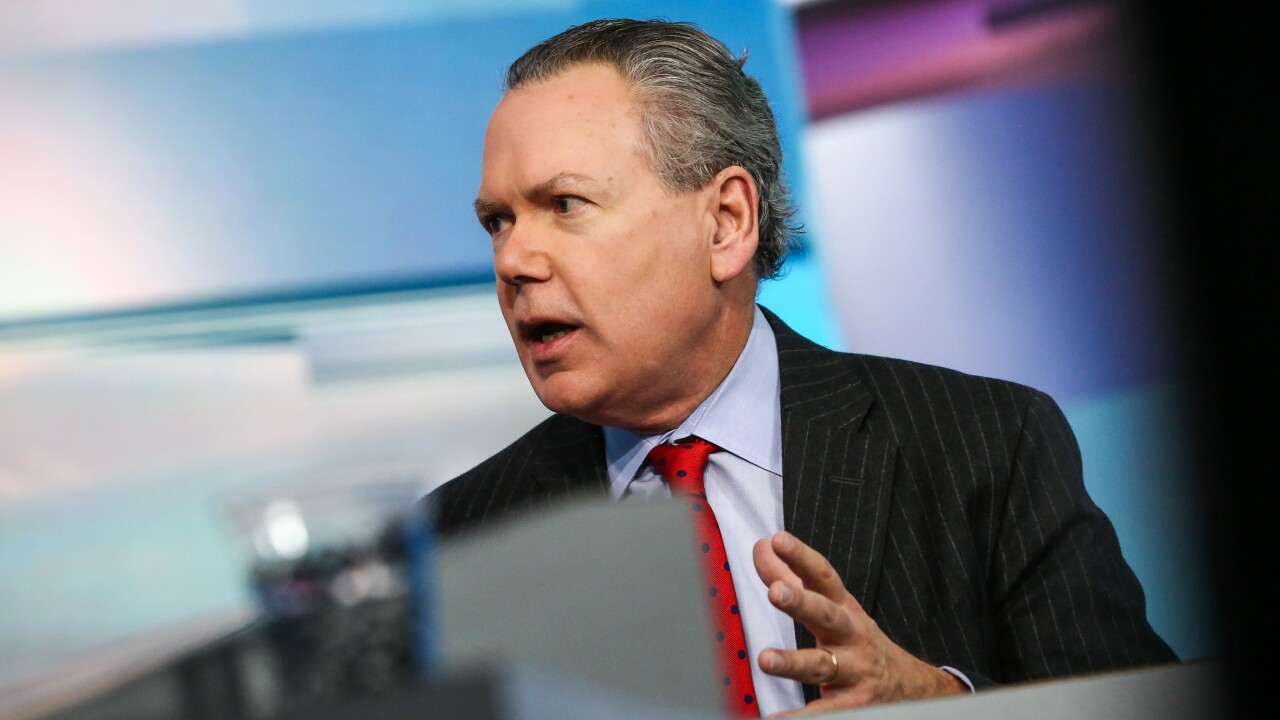Monetary policy may not be the answer for what ails the economy, Federal Reserve Bank of Kansas City President Esther George said Friday.
“My own outlook for the economy does not call for a monetary policy response,” George said in a speech in Denver, according to prepared text released by the Fed. “While weakness in manufacturing and business investment is evident, it is not clear that monetary policy is the appropriate tool to offset the risks faced by businesses in those sectors when weighted against the costs that could be associated with such action.”

Economic growth, with a strong labor market and low inflation, is threatened by “prominent” downside risks that are weighing on “key parts of the goods-producing sector,” she said. “This dichotomy presents a challenge for policymakers as they determine the appropriate stance for monetary policy under such conditions.”
The choices become more difficult whether to cut rates “as a proactive step to ward off weakness in a particular sector in the attempt to prevent that weakness from spreading to broader parts of the economy,” or “closely monitor the sectoral weakness, but wait until signs emerge of a broader slowdown in activity before taking action,” George said.
The issue then becomes data dependence versus risk management. One challenge with using a risk-management approach “is that while the benefits of taking out insurance may be clear, the costs are not,” she added. This insurance could cause “overheating” in well-performing sectors of the economy, which “can lead to a misallocation of resources toward those interest rate-sensitive sectors at the expense of sectors that may be better positioned for growth over the longer run.”
Easing policy should “encourage risk-taking and leverage,” George said. “In the earlier periods of an economic expansion, risks associated with increasing leverage may be moderate, and as such the cost of extra insurance may be low. But these costs move higher as the economic expansion matures and as levels of corporate debt and other vulnerabilities become elevated.”
Turning to her dissent on recent rate cuts, George said, “From a data-dependence perspective, the moderation of economic growth in 2019 has been for the most part in line with my outlook, in which I expect growth to gradually decline toward its longer-run trend level over the medium term. The combination of record-low unemployment, moderate growth, and low and stable inflation with an unchanged outlook led me to conclude that an unchanged setting for the federal funds target range remained appropriate.”
And while she doesn’t believe a rate cut was needed, George said she is aware of “the downside risks facing our economy. The emergence of those key risks to the outlook as early as the fourth quarter of 2018 caused me to moderate my expectation that further rate increases were needed.”
If “downside risks spill over into the broader economy in a way that fundamentally affects the consumer and shifts the overall outlook,” she said, “I would be prepared to adjust monetary policy accordingly.”
Leading indicators
The Leading Economic Index dipped 0.1% in September after a 0.2% slip in August, the Conference Board reported Friday.
The Coincident Index was flat in the month, after a 0.3% rise in August, while the Lagging Index rose 0.1% after a 0.4% drop in August.
“The US LEI declined in September because of weaknesses in the manufacturing sector and the interest rate spread, which were only partially offset by rising stock prices and a positive contribution from the Leading Credit Index,” according to Ataman Ozyildirim, senior director of economic research at The Conference Board. “The LEI reflects uncertainty in the outlook and falling business expectations, brought on by the downturn in the industrial sector and trade disputes. Looking ahead, the LEI is consistent with an economy that is still growing, albeit more slowly, through the end of the year and into 2020.”





